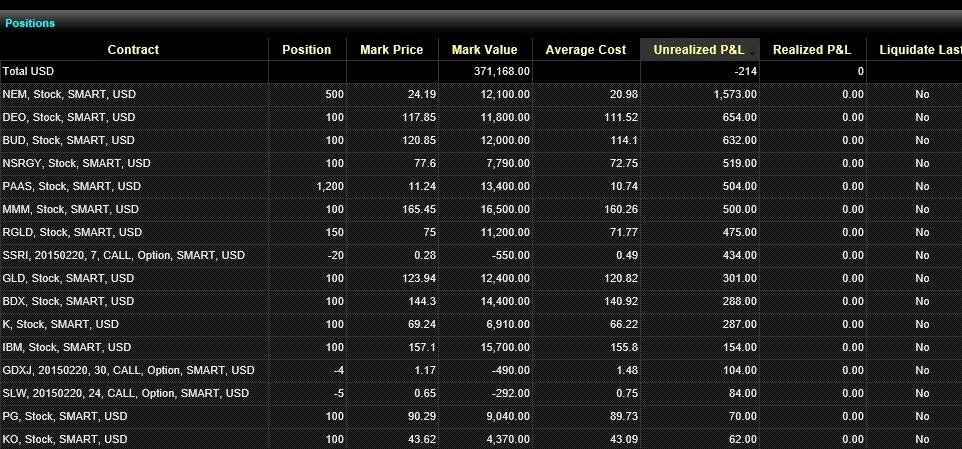Mass Psychology The Dollar Trade
Post on: 24 Апрель, 2015 No Comment

I’m of course not a psychologist but it doesn’t take a rocket scientist to figure out how perverse the herd instinct of humans have become. Gone are the days when individuals act on their own beliefs. We now share an increasingly larger pool of common beliefs which are ironically also shaped by a natural force. This natural force is evident in all social settings, in the financial markets, in politics, and of course in economic management on a grand scale.
A look at how the world’s most successful money managers, investors, and traders (excluding those who enjoyed fleeting success only to see their equity curve hit nadir) will reveal one thing. That is they have independent thought processes. and will fully bear the brunt of their decisions vis a vis the markets, regardless of the outcome. Having personally been exposed (financially and emotionally) to the Silver bubble of 2011, and more recently the BitCoin bubble of 2013, I can tell you that there is an underlying reason why humans flock to the perceived safety of collective beliefs. The reason is simple — the herd reaction is the path of least resistance. It is simply wired in our frontal cortex; there is no utility in questioning why. And this is why, ladies and gentlemen, more than 95% of traders will eventually end up loosing money. The losses of the 95% fund the windfalls of the 5%.
Ever wondered why traders and money managers are generally frowned upon by society? Envy, and of course they serve as convenient scapegoats for those that loose money. Granted, I’m generalizing by some measure here, but the gist is true; it has been proven true over the decades of modern finance.
A broad example is illustrated by the CFTC’s Commitment of Traders (COT) report published by the commission every week. This report covers the futures contracts that that on America’s exchanges and reports the collective positioning of 3 specific groups of market participants: small speculators (retail); large speculators (institutional); and commercials (hedgers). The general observable patterns are hedgers tend to be in an extreme position against the prevailing trend when the market turns over, while the large speculators tend to be in an extreme position with the prevailing trend just before the market turns over. I’d like to phrase it my way: Specs are right for the meat of the move but not at the turn, commercials are right at the turn but not for the meat of the move
When you start connecting the dots you might get nudged in the right direction. I hardly see this concept being spoken on forums and blogs so I shall share it here.
Let’s use the US dollar as a prime and current example. Everyone knows the greenback has been enjoying strength against just about all asset classes but equities and bonds. Latest COT reports show that traders are most short the € and the ¥ against the dollar and when summed up, the net position on the dollar is near a historic extreme. The impetuses of the long dollar trade is many-fold. The scaling back and termination of the Federal Reserve’s QE program and increasingly hawkish forward rate guidance, and the disinflationary pressures in the commodity space coupled with stagnation in Europe and a technical recession in Japan being the strongest of them all.
So let’s get this right, the fundamentals are well in place for a long dollar play. Think about it, America is one of the strongest economy (growth and non-farm employment) of the G7, Europe and Japan are seated in their respective economic quagmires while their central banks have been ratcheting up the rhetoric in easier monetary policy accommodation, and the expectations that the Fed will hike rates come mid-2015.
This long dollar play has been escalating for quite some time back, the the chart above illustrates. The chart however only shows the positions of the large speculators. Commercials are, as you would expect, very short the dollar. I’ve read an increasing number of articles either questioning the dollar’s strength or outright calling for a reversal of the trend. All of them have basis but no one will ever know when the it will happen, until it does.

Moving to the schematics of why reversals often happen abruptly and catches traders off guard, we marry mass psychology with and logic (2 completely different things when markets are concerned). I’m not expressing my personal opinions on the Dollar, more on this in a separate entry. Assuming the dollar tops out, the decline will probably be more vicious than the preceding run up.
The adage markets take the stairs up and the elevator down really does out a grin across my face sometimes. When we see a reversals, long positions of the large speculators (think banks, trading desks, money managers, and hedge funds) will start being liquidated for obvious reasons (risk and correlation parameters and stops being filled). Liquidations, depending on their velocity and magnitude can lead to a capitulation where the initial sell-off quickly morphs into an exodus, sometimes senseless ; this is also know as panic selling, and the herd reaction instinct immediately kicks in the accelerate the vicious process. Smarter traders and most momentum-based systems should have by then already initiated fresh shorts on the dollar against other assets, further accelerating the decline and adjusting the equilibrium of longs to shorts. Another thing to add, as speculators are a major source of liquidity and open interest, when huge liquidations occur, liquidity is often thinned. An illiquid market is the last thing traders wish for in such a sell-off. Generalizing and simplifying, speculators act collectively on panic. rushing for the exit at once, we know the adverse effect of that behavior.
Commercials on the other hand will begin to reduce their hedge against a strengthening dollar by squaring their short dollar positions but in a more orderly fashion as there is little speculative element to their operations (commercials are hedgers for the most part). Actions of this group of participants serve as fodder to support some of the speculators’ liquidations (i.e. taking the other side of the trade).
This was precisely what happened when global equities experienced a sizable correction that started late September. That episode was rather short lived mainly because there weren’t strong fundamentals unlike what we saw in previous corrections. Fear was also at an extremely level at the height of the decline, and that climaxed the play. The ensuing reversal was almost as ferocious and that left many much less exposed. Job well done indeed.
The topic of market psychology too profound for a single entry. But hopefully it has provided insight into how the concept functions. Following entries will seek to speak about how we can better our performance through deeper understanding of such dynamics.














